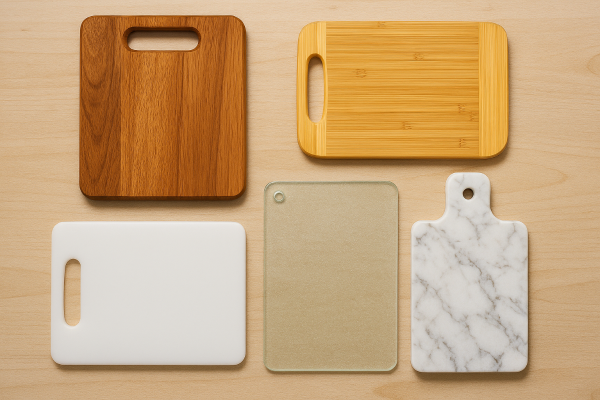
Safely Using and Caring for Cutting Boards
September 26, 2025 - Mary Donaldson
Cutting boards are not a very useful piece of kitchen equipment by themselves, yet they are the workhorses of the kitchen and may last a lifetime if properly cared for. There are many materials used to make cutting boards. The type of material will affect the sharpness of a knife. Glass cutting boards and stone cutting boards will dull knives quickly. Wood or plastic cutting boards are much kinder to the knife blade.
Composite cutting boards are durable and easy to clean. Check that decorative cutting boards are safe to use with food. Cutting boards made with soft wood, such as pine, are easily scratched and should be avoided. While oak is a hardwood, red oak (Quercis rubra) specifically, has open pores, allowing moisture to be absorbed, and is not recommended for cutting boards.
Cutting boards can be a source of foodborne illnesses. MSU Extension recommends replacing those wood or plastic cutting boards with deep grooves on the surface. The microorganisms that may cause foodborne illness can easily hide in these spaces. Research has found that these little hiding spots can protect bacteria even on plastic cutting boards that go through the dishwasher.
The Food Safety and Inspection Service recommends using separate cutting boards just for raw meat, poultry, and eggs that are different from the cutting boards for fruit and vegetables. This can decrease the risk of becoming sick from Shiga toxin-producing E. coli, Listeria ssp., Salmonella ssp., and many other pathogens.
Washing the cutting board immediately after use will decrease bacterial growth. After using the cutting board for raw meat, poultry, or seafood, clean and sanitize it to reduce microorganisms that cause foodborne illness. Use an approved sanitizer with the correct concentration. Don’t use abrasive cleaners as they can create scratches on the board for, you guessed it, bacteria to hang out waiting to cross-contaminate other food.
For cutting boards that slip on the countertop, there's a trick to make them safer when wielding a knife. Use a clean, damp dish towel, or even a damp paper towel, and place it flat on the counter, and on top of that, the cutting board. This will keep the board from slipping when making cuts.
Other considerations when using knives are knowing the different parts of a knife, how to handle it properly, as not to injure oneself, and how to sharpen a knife.



 Print
Print Email
Email




